16 Poisonous Plants You Should Avoid
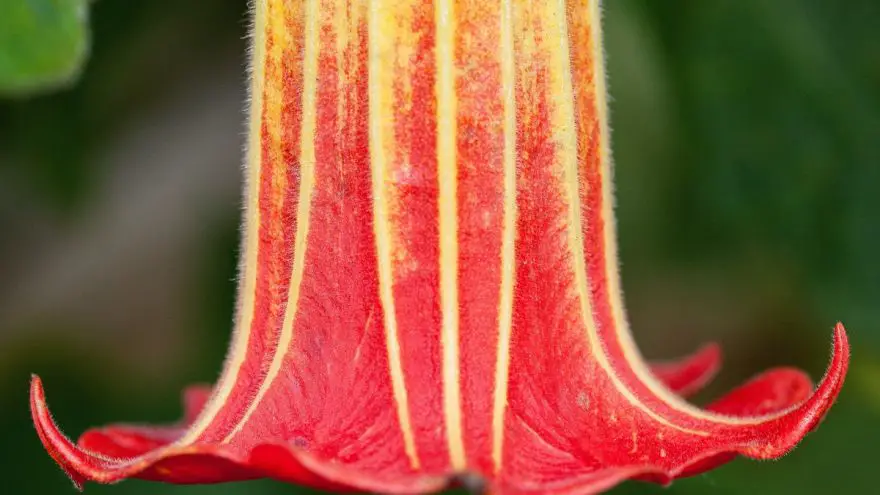 16 Poisonous Plants You Should Avoid
thegearhunt.com
16 Poisonous Plants You Should Avoid
thegearhunt.com
Did you know that you can find poisonous plants nearly everywhere? They are in the mountains, forest, and woods. Some of them might just be in your garden! That being said, you will not be harmed by these plants if you don’t touch or eat them. As you read through this, you will see that avoiding them is really rather easy. Just stick with your normal foods and stay away from anything that has a bitter taste. Also, try not to eat flowers or seeds.
In fact, you should never eat anything that you aren’t familiar with and if you do happen to be out in the wilderness, you need to be properly attired. Wear clothing that is insulated and/or thick, as well as durable, tough boots. Never make the assumption that if you see a goat or deer eat something that it will be ok for you to eat it.
Identifying those plants that are poisonous might seem to be a task that is daunting, especially when you are in a crisis situation, but you have to keep in mind that the primary goal is to survive. In case you are ever lost in the wilderness, here is a quick look at some of the plants you need to steer clear of.
Aconite
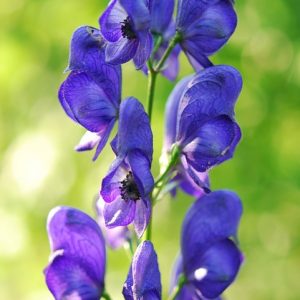 This plant is also known as monkshood and no guide to the poisonous plants would be complete without it. The monkshood that might be in your garden is native to central and western Europe, but it is also grown in North America in gardens. It features showy spires of flowers that have a color of purple and it blooms in late fall. The flower has a hood-like shape, and this is how the plant gets the name monkshood. Extracts of this plant are sometimes used as a homeopathic drug to treat things like inflammation, but even then, it is poisonous and can actually be deadly.
This plant is also known as monkshood and no guide to the poisonous plants would be complete without it. The monkshood that might be in your garden is native to central and western Europe, but it is also grown in North America in gardens. It features showy spires of flowers that have a color of purple and it blooms in late fall. The flower has a hood-like shape, and this is how the plant gets the name monkshood. Extracts of this plant are sometimes used as a homeopathic drug to treat things like inflammation, but even then, it is poisonous and can actually be deadly.
Century Plant/Agave
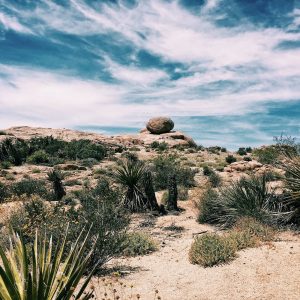 As mentioned above, you can find plants that are poisonous nearly everywhere. Take agave, for example. This is a plant that is often seen in use in landscaping. The sap of the agave plant is toxic and will cause immediate burning and pain when it comes into contact with your skin. Generally, the skin it touches will turn red and might even begin to form blisters after contact with agave sap. The skin that it came into contact with might also be a bit more sensitive to the sun. If you touch it, get burned, and still have the desire to eat it, there is more fun to be had. The saponin from agave can have consequences that include things like liver and kidney damage.
As mentioned above, you can find plants that are poisonous nearly everywhere. Take agave, for example. This is a plant that is often seen in use in landscaping. The sap of the agave plant is toxic and will cause immediate burning and pain when it comes into contact with your skin. Generally, the skin it touches will turn red and might even begin to form blisters after contact with agave sap. The skin that it came into contact with might also be a bit more sensitive to the sun. If you touch it, get burned, and still have the desire to eat it, there is more fun to be had. The saponin from agave can have consequences that include things like liver and kidney damage.
Almond Seeds
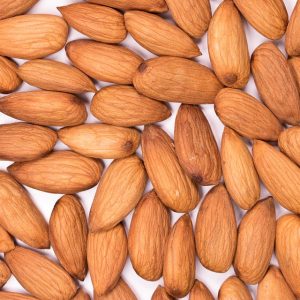 Most poisonous plants are described as those that have the greatest concentration of toxins. Most of the time, those toxins are located in the seeds. Almonds contain prunasin and amygdalin, which are both compounds that are cyanogenic. Our intestines contain enzymes that have the ability to turn those things into cyanide. Cyanide poisoning and even death have occurred after people ate bitter almonds. The FDA in the US actually prohibits any sale of bitter almonds that haven’t been processed, due to the risk of toxicity from cyanide. The kind of almonds that you can find being sold everywhere are sweet almonds, and these are safe for you to eat.
Most poisonous plants are described as those that have the greatest concentration of toxins. Most of the time, those toxins are located in the seeds. Almonds contain prunasin and amygdalin, which are both compounds that are cyanogenic. Our intestines contain enzymes that have the ability to turn those things into cyanide. Cyanide poisoning and even death have occurred after people ate bitter almonds. The FDA in the US actually prohibits any sale of bitter almonds that haven’t been processed, due to the risk of toxicity from cyanide. The kind of almonds that you can find being sold everywhere are sweet almonds, and these are safe for you to eat.
Angel’s Trumpet
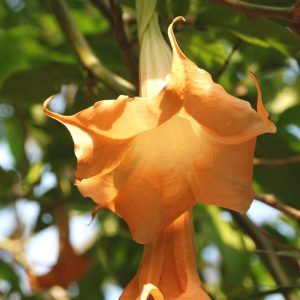 You know, beautiful plants and flowers often turn out to be quite poisonous. The large, trumpet-shaped, pendulous flower of Angel’s trumpet might give off a perfume that is quite beautiful, but they are poisonous. It is hard to imagine that this plant can be devastating. The sap of this plant can cause things like an elevated heart rate, confusion, and problems with vision.
You know, beautiful plants and flowers often turn out to be quite poisonous. The large, trumpet-shaped, pendulous flower of Angel’s trumpet might give off a perfume that is quite beautiful, but they are poisonous. It is hard to imagine that this plant can be devastating. The sap of this plant can cause things like an elevated heart rate, confusion, and problems with vision.
Apple Seeds
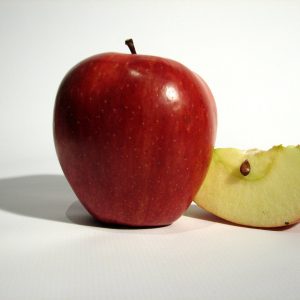 The apple is included in this list specifically for its seeds. People often accidentally ingest a seed when eating apples, but you would need to eat a great deal of them to get sick. One apple doesn’t contain enough seeds to kill anyone, but it is possible to consume enough of them to die.
The apple is included in this list specifically for its seeds. People often accidentally ingest a seed when eating apples, but you would need to eat a great deal of them to get sick. One apple doesn’t contain enough seeds to kill anyone, but it is possible to consume enough of them to die.
Apricot Seeds
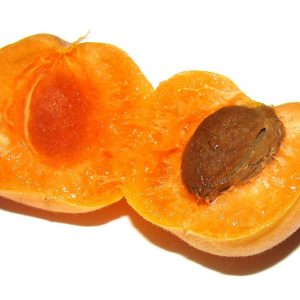 You probably wouldn’t equate the apricot with poison, but the seeds are quite toxic. The kernel of the apricot has a toxin known as amygdalin. When ingested, this becomes cyanide, and cyanide can kill you. This seed was viewed as a possible treatment for fighting cancer, due to the fact that it was first taken up by the cancerous cells and then converted to cyanide. The hope was that the cyanide would only harm the tumor. However, research has proven that this isn’t the case. The transformation to cyanide occurs in the stomach. Then, the cyanide goes through the rest of the body, and it can cause serious damage and even death.
You probably wouldn’t equate the apricot with poison, but the seeds are quite toxic. The kernel of the apricot has a toxin known as amygdalin. When ingested, this becomes cyanide, and cyanide can kill you. This seed was viewed as a possible treatment for fighting cancer, due to the fact that it was first taken up by the cancerous cells and then converted to cyanide. The hope was that the cyanide would only harm the tumor. However, research has proven that this isn’t the case. The transformation to cyanide occurs in the stomach. Then, the cyanide goes through the rest of the body, and it can cause serious damage and even death.
Autumn Crocus
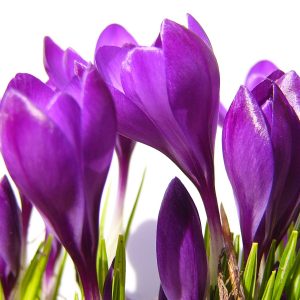 Some of this flower’s common names might be amusing, but the meadow saffron/autumn crocus is still a plant that is poisonous. The active part is alkaline and has a very poisonous nature. It is called Colchicine. This substance is a sedative, acrid, and acts upon each of the secreting organs, specifically the kidneys and bowels. It can cause undue depression and can even act as an irritant poison when taken in large doses.
Some of this flower’s common names might be amusing, but the meadow saffron/autumn crocus is still a plant that is poisonous. The active part is alkaline and has a very poisonous nature. It is called Colchicine. This substance is a sedative, acrid, and acts upon each of the secreting organs, specifically the kidneys and bowels. It can cause undue depression and can even act as an irritant poison when taken in large doses.
Azalea
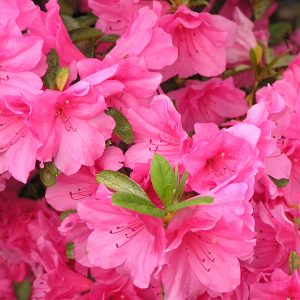 Now, if you grew up in the south, there is a fantastic chance that this plant was growing somewhere in your yard. However, it is one of the most poisonous plants. It is so poisonous that even honey that is made from it is still toxic. If you consume the flowers or leaves you can be poisoned. The effects of this plant have been known since around 400 BCE. Honey back then was one of the main sources of sweetness in Asia and Europe. Greek soldiers poisoned themselves by eating the honey made from this plant for prolonged periods.
Now, if you grew up in the south, there is a fantastic chance that this plant was growing somewhere in your yard. However, it is one of the most poisonous plants. It is so poisonous that even honey that is made from it is still toxic. If you consume the flowers or leaves you can be poisoned. The effects of this plant have been known since around 400 BCE. Honey back then was one of the main sources of sweetness in Asia and Europe. Greek soldiers poisoned themselves by eating the honey made from this plant for prolonged periods.
The digestive tract can break down smaller doses of what is called andromedotoxins into compounds that are harmless, so that means that when it comes to fatalities from eating the azalea are rare. That being said, people who eat a lot of it can suffer from things like low blood pressure, upset stomach, vomiting, and nausea. People who eat it on a regular basis or the honey from it can also suffer these symptoms chronically.
Bittersweet
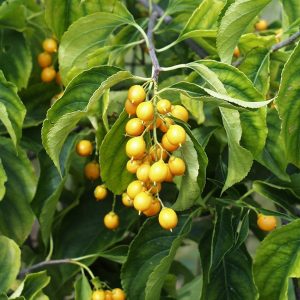 The name of this one alone should clue you in to it being poisonous. The American bittersweet is a vine that is woody, and it is often seen being used in dried flower arrangements and fall wreaths. The berries are orangish-yellow, and they are essentially capsules with three parts and there is a seed in each of the parts. The berries grow right where the stems and leaves meet. Eating these berries can cause diarrhea and stomach upset.
The name of this one alone should clue you in to it being poisonous. The American bittersweet is a vine that is woody, and it is often seen being used in dried flower arrangements and fall wreaths. The berries are orangish-yellow, and they are essentially capsules with three parts and there is a seed in each of the parts. The berries grow right where the stems and leaves meet. Eating these berries can cause diarrhea and stomach upset.
Black Cherry Seeds
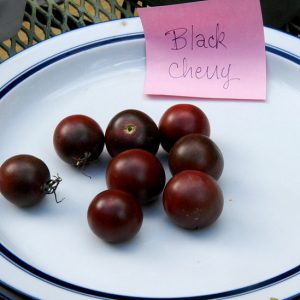 Plants that are poisonous tend to make only the fruit edible for animals and humans. The seeds of the black cherry are poisonous if you eat them. They can cause respiratory failure, coma, convulsions, spasms, dilation of the pupils, weakness, and gasping. These can be fatal if you eat them. The poisonous principle of the black cherry seed is amygdalin and a cyanogenic glycoside.
Plants that are poisonous tend to make only the fruit edible for animals and humans. The seeds of the black cherry are poisonous if you eat them. They can cause respiratory failure, coma, convulsions, spasms, dilation of the pupils, weakness, and gasping. These can be fatal if you eat them. The poisonous principle of the black cherry seed is amygdalin and a cyanogenic glycoside.
Black Henbane
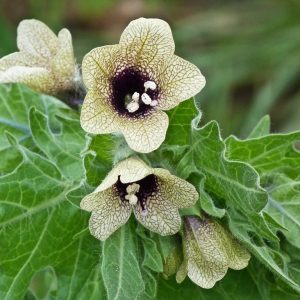 This plant makes the list due to its being known to have caused people to go into a coma. All of the parts of this plant are considered to be very toxic due to the alkaloids scopolamine and hyoscyamine. This plant can be fatal to those who eat it. It is considered to be poisonous to all humans and livestock, even when the doses are quite low. Symptoms of being poisoned from eating this plant include things like coma, convulsions, rapid pulse, diarrhea, vomiting, nausea, headache, and salivation. It can also cause irritation to the skin to those who touch it. This is a plant that has been known to poison and kill.
This plant makes the list due to its being known to have caused people to go into a coma. All of the parts of this plant are considered to be very toxic due to the alkaloids scopolamine and hyoscyamine. This plant can be fatal to those who eat it. It is considered to be poisonous to all humans and livestock, even when the doses are quite low. Symptoms of being poisoned from eating this plant include things like coma, convulsions, rapid pulse, diarrhea, vomiting, nausea, headache, and salivation. It can also cause irritation to the skin to those who touch it. This is a plant that has been known to poison and kill.
Herbicides that are effective on this plant include metsilfuron, 2,4-D, dicamba, and picloram. Two of the alkaloids from this plant, called scopolamine and hyoscyamine are useful as anti-spasmodic and sedative drugs when they are used correctly.
Back in the Middle Ages, this plant was used widely in Germany in order to augment beer’s inebriating qualities. In fact, many of the towns in Germany have names that came from the word Bilsen (or henbane). Later, that word was changed to Pilsen, which is the name of the famous Pilsen beer. Many years were spent before henbane was banned in brewing because of the many poisonings it caused.
Black Locust Seeds
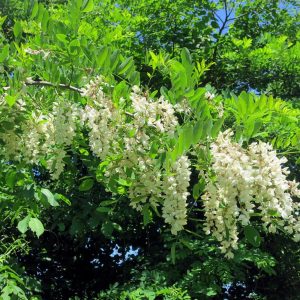 As far as poisonous plants go, remember that death is always a possibility. The seeds from this plant are a good example of that. The seeds, leaves, and bark all contain robitin, phasin, and robin, which are all toxalbumins and can produce kidney damage, liver damage, blood cell damage, weakness, severe gastrointestinal irritation, and even death.
As far as poisonous plants go, remember that death is always a possibility. The seeds from this plant are a good example of that. The seeds, leaves, and bark all contain robitin, phasin, and robin, which are all toxalbumins and can produce kidney damage, liver damage, blood cell damage, weakness, severe gastrointestinal irritation, and even death.
Black Nightshade
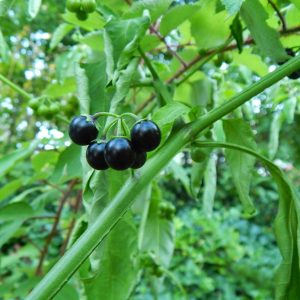 Nearly all of the members in the nightshade family are poisonous, even this one. The name should clue you in. Both the berries and the foliage are incredibly toxic. The deadly nightshade has a colorful and long history of being used as a poison, but the thing that most people don’t seem to realize is that this plant family actually includes many plants that are commonly used for food, such as chili peppers, eggplants, tomatoes, and potatoes. All of these plants do contain toxins, that are typically in the foliage, and these toxins can be quite harmful. In fact, pets and humans should avoid things like tomato and potato vines and foliage in the garden.
Nearly all of the members in the nightshade family are poisonous, even this one. The name should clue you in. Both the berries and the foliage are incredibly toxic. The deadly nightshade has a colorful and long history of being used as a poison, but the thing that most people don’t seem to realize is that this plant family actually includes many plants that are commonly used for food, such as chili peppers, eggplants, tomatoes, and potatoes. All of these plants do contain toxins, that are typically in the foliage, and these toxins can be quite harmful. In fact, pets and humans should avoid things like tomato and potato vines and foliage in the garden.
Cardinal Flower
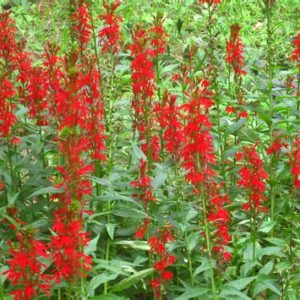 There is much more to this flower’s bright red color than simply being akin to the robe of a Catholic cardinal. The cardinal flower is a perennial native to the swamps of the Americas. It can be poisonous to dogs, cats, and humans. The severity of its symptoms can vary from person to person. Most of the time, a child will have more serious reactions than an adult. The primary toxicant is lobeline. This is a naturally occurring chemical that is found commonly in plants. Symptoms of being poisoned by this plant include abdominal pain, vomiting, irregular heartbeat, mental confusion, excessive salivation, and depression.
There is much more to this flower’s bright red color than simply being akin to the robe of a Catholic cardinal. The cardinal flower is a perennial native to the swamps of the Americas. It can be poisonous to dogs, cats, and humans. The severity of its symptoms can vary from person to person. Most of the time, a child will have more serious reactions than an adult. The primary toxicant is lobeline. This is a naturally occurring chemical that is found commonly in plants. Symptoms of being poisoned by this plant include abdominal pain, vomiting, irregular heartbeat, mental confusion, excessive salivation, and depression.
Carolina Jessamine
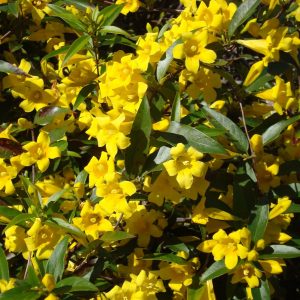 Sometimes, poisonous plants can look similar to varieties that are harmless. For example, this plant looks similar to honeysuckle. This is a vine that is high climbing and is quite common in the South. It is frequently found climbing high into pine tree canopies and in fields that have been abandoned. It is quite tenacious and adaptable and has no serious insect or disease problems. Because of these qualities, and its trumpet-shaped flowers and glossy leaves, it has been a mainstay in the suburban landscape of the Southeast. Its roots, leaves, and flowers are all poisonous and it can be fatal for livestock and humans. The nectar of this species can also be toxic to bees who consume too much of it, and the honey made from it can also be toxic to humans. Swamp Jessamine, also known as Rankins Yellow Jessamine has odorless flowers and can be found in swamps from Florida all the way to North Carolina.
Sometimes, poisonous plants can look similar to varieties that are harmless. For example, this plant looks similar to honeysuckle. This is a vine that is high climbing and is quite common in the South. It is frequently found climbing high into pine tree canopies and in fields that have been abandoned. It is quite tenacious and adaptable and has no serious insect or disease problems. Because of these qualities, and its trumpet-shaped flowers and glossy leaves, it has been a mainstay in the suburban landscape of the Southeast. Its roots, leaves, and flowers are all poisonous and it can be fatal for livestock and humans. The nectar of this species can also be toxic to bees who consume too much of it, and the honey made from it can also be toxic to humans. Swamp Jessamine, also known as Rankins Yellow Jessamine has odorless flowers and can be found in swamps from Florida all the way to North Carolina.
Carolina Laurel Cherry
 This plant is poisonous due to its content of hydrocyanic acid, which is a form of cyanide. The natural range of this plant is from east Texas all the way to west North Carolina and it takes the form of a small tree or dense shrub. It can grow to a height of 36 feet and its outline can be oval to pyramid in shape. Its leaves are smooth and firm with a narrowly elliptic shape that tapers to a tip that is pointed and is equally tapered at the base. The margins tend to be smooth on trees that are reproductive and have pointed narrow teeth on root sprouts and saplings. Its upper surface is a shiny dark green, and the lower surface is duller and lighter. If you eat the leaves, you will find that they taste of almonds, but you will be poisoned if you do.
This plant is poisonous due to its content of hydrocyanic acid, which is a form of cyanide. The natural range of this plant is from east Texas all the way to west North Carolina and it takes the form of a small tree or dense shrub. It can grow to a height of 36 feet and its outline can be oval to pyramid in shape. Its leaves are smooth and firm with a narrowly elliptic shape that tapers to a tip that is pointed and is equally tapered at the base. The margins tend to be smooth on trees that are reproductive and have pointed narrow teeth on root sprouts and saplings. Its upper surface is a shiny dark green, and the lower surface is duller and lighter. If you eat the leaves, you will find that they taste of almonds, but you will be poisoned if you do.
Sources
- Live Outdoors, Guide to Poisonous Plants from Irritants to Medicines
- Kremp Florist, The Hiker’s Guide to Poisonous Plants
- Aggie Horticulture, Common Poisonous Plants and Plant Parts
- You Tube, 15 poisonous Plants















